Chapter 6
Managing an Active Campaign
In This Chapter
![]() Launching your campaign
Launching your campaign
![]() Tracking backers
Tracking backers
![]() Promoting your deadline
Promoting your deadline
![]() Monitoring fees and costs
Monitoring fees and costs
After successfully submitting your project for approval, you should receive notification of acceptance within 48 hours. Congratulations! You’re ready to launch your project and watch the backers’ support come in — hopefully!
In this chapter I discuss how to officially launch your campaign and start contacting your potential backers. You also find out how to monitor your backers and provide updates throughout the project.
Launching Your Campaign
After you receive approval for your campaign from Kickstarter, your project campaign doesn’t automatically go live. You have to launch it. Figure 6-1 shows your project page once you’re cleared to launch and go live. (Note the Accepted status that appears in the sidebar on the right.)
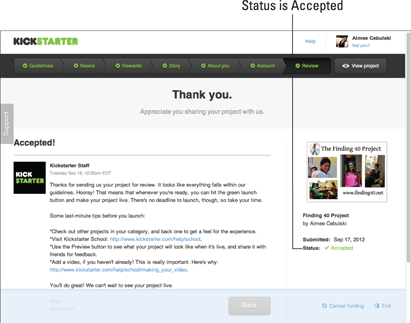
Figure 6-1: Kickstarter project page with status changed to Accepted.
Before you launch your project, you have a chance to review it before your campaign is live and available to potential backers. You can check out the review list in Chapter 5 for general project items to review. Most importantly, this is the last chance to adjust your funding duration and fine-tune the dates for your Kickstarter fundraising window.
Here are some questions to consider before you officially start the clock on your campaign by launching it:
![]() Are you attempting to have your campaign end on a certain milestone date? If so, look at your duration and count out the number of days to identify your desired ending date and time. Make sure your duration and launch date set you up to meet that milestone end date.
Are you attempting to have your campaign end on a certain milestone date? If so, look at your duration and count out the number of days to identify your desired ending date and time. Make sure your duration and launch date set you up to meet that milestone end date.
![]() Do you need to avoid overlapping with holidays? As your fundraising campaign comes to a close, you’ll want to promote your deadline to backers and potential backers. (I explain promoting your deadline later in this chapter.) You’ll have trouble capturing people’s attention during this time if your campaign ends close to Thanksgiving or Christmas, when many people are busy preparing for their holiday celebrations, or if your campaign ends around national holidays, like Memorial Day or the Fourth of July in the U.S., when people often take time off to unplug and be with their friends and families.
Do you need to avoid overlapping with holidays? As your fundraising campaign comes to a close, you’ll want to promote your deadline to backers and potential backers. (I explain promoting your deadline later in this chapter.) You’ll have trouble capturing people’s attention during this time if your campaign ends close to Thanksgiving or Christmas, when many people are busy preparing for their holiday celebrations, or if your campaign ends around national holidays, like Memorial Day or the Fourth of July in the U.S., when people often take time off to unplug and be with their friends and families.
If you see that your ending date and any substantial part of your fundraising time overlaps with an important holiday, consider adjusting the start date of your campaign to avoid the potential conflict unless your campaign specifically is related to a major holiday where people might naturally be searching for things around that topic.
![]() Are you timing your event to coincide with a major industry event or festival? This could be a worthwhile option if you think there would be a large potential audience for your project and you’re planning on attending that event or industry gathering. For example, if you’re using Kickstarter to fund a cool new app in the Technology category, and you’re attending the SXSW conference in Austin, you might want to make sure your campaign is live during that timeframe and at least a week after, so that you can alert anyone you meet to the opportunity to back your project. On the flip side, if you’re not attending or participating in a big industry event, it might be wise to avoid your campaign being live during those dates, because everyone else might be busy with the event. For example, if you’re publishing a small comic book series and you’re not attending Comic-Con in San Diego, you could face difficulty getting attention of bloggers, writers, and industry leaders during those dates, because they will be covering the industry’s largest annual event.
Are you timing your event to coincide with a major industry event or festival? This could be a worthwhile option if you think there would be a large potential audience for your project and you’re planning on attending that event or industry gathering. For example, if you’re using Kickstarter to fund a cool new app in the Technology category, and you’re attending the SXSW conference in Austin, you might want to make sure your campaign is live during that timeframe and at least a week after, so that you can alert anyone you meet to the opportunity to back your project. On the flip side, if you’re not attending or participating in a big industry event, it might be wise to avoid your campaign being live during those dates, because everyone else might be busy with the event. For example, if you’re publishing a small comic book series and you’re not attending Comic-Con in San Diego, you could face difficulty getting attention of bloggers, writers, and industry leaders during those dates, because they will be covering the industry’s largest annual event.
Determine what date you want your project to go live based on your funding duration. If the ending date looks acceptable, you can launch that same day. If not, consider waiting so the end date coincides with a milestone date you have in mind.
You will receive an e-mail from Kickstarter that alerts you to the fact that you’re ready to launch. To actually launch your campaign, click the link sent in your acceptance e-mail message which will take you to your project dashboard. There, you will see a new green Launch button. Click it to proceed. When your campaign is live, you’re ready to start spreading the word.
Creating a Compelling Call to Action
When you make the ask for backers’ support, part of your ask needs to include a reason why the project should be completed. Beyond just your desire to make a funny cartoon or entertaining short film, there should be a reasoning behind your project.
Before you begin reaching out to backers, use the following process to create your compelling call to action:
1. Write down your responses to the following three questions:
• Why are you interested in your topic?
• What are you hoping to accomplish or achieve?
• Who would most benefit from your project?
2. Examine the answers, and combine all three concepts into a single paragraph or even one sentence (if possible!).
This is your compelling call to action.
 Your call to action should be at the very core of your request to potential backers. In the case of my Kickstarter project, I wanted backers to think about the concepts presented in The Finding 40 Project and encourage them to browse the stories and photos of women worldwide, all facing 40. The call was, “Is age just a number? Hear their stories and find your 40!”
Your call to action should be at the very core of your request to potential backers. In the case of my Kickstarter project, I wanted backers to think about the concepts presented in The Finding 40 Project and encourage them to browse the stories and photos of women worldwide, all facing 40. The call was, “Is age just a number? Hear their stories and find your 40!”
Contacting Potential Backers
After you have created an initial list of all your potential backers (Chapter 3 helps you get started), you need to figure out a way to get in touch with all of them. Obviously, you will likely talk one-on-one about your project to your most personal contacts, such as family or close friends. These people care most about what your project means to you and your hopes for their level of support.
However, there will be a large list of people that need different ways of contact. In the sections that follow, you find tips for promoting your Kickstarter campaign through several vehicles.
Sending personal e-mails
E-mail is the most direct way to communicate with individuals on a one-on-one basis. In order to use this technique, you need several things:
![]() Each person’s individual e-mail address.
Each person’s individual e-mail address.
![]() Ensure that these people will recognize an e-mail from you on name alone — meaning that they know you as a person and not just an e-mail list administrator. For example, if you're publishing a photo book on rescue animals for a volunteer group related to animal welfare, and you want to e-mail members of the group, make sure that the people you're e-mailing know of you as an individual and not just as a generic e-mail address such as
Ensure that these people will recognize an e-mail from you on name alone — meaning that they know you as a person and not just an e-mail list administrator. For example, if you're publishing a photo book on rescue animals for a volunteer group related to animal welfare, and you want to e-mail members of the group, make sure that the people you're e-mailing know of you as an individual and not just as a generic e-mail address such as [email protected].
![]() A concise and direct call to action announcing the program and your request for backing.
A concise and direct call to action announcing the program and your request for backing.
The following example e-mail, based on my own Kickstarter campaign, illustrates how you can clearly outline your project, deadlines, and goals:
From: Aimee Cebulski
Subject: Preorder your copy of The Finding 40 Project through my Kickstarter campaign
Hello!
I am very excited to announce that my Kickstarter campaign for the production of The Finding 40 Project is now up and live! This has been an amazing two year process, where I have been compiling a set of interviews and photos of women all around the world, all turning 40 years old. This book is the culmination of those efforts.
You can visit the campaign page here: http://www.kickstarter.com/projects/920030067/finding-40-project
Through the site, you can back the project and preorder an e-book or printed edition (or both) of the finished product based on your backer level. You can order only through October 31, so order now!
This has been an amazing process, and I’m excited to be closing in on the end, finishing up my last interviews at the end of the year and aiming for books to ship in Spring 2013.
As always, thank you so much for your support and encouragement!
Thanks in advance for your consideration,
Aimee
Aimee Cebulski
The Finding 40 Project
What was I trying to communicate here?
![]() The personal nature of the project
The personal nature of the project
![]() My specific goals for delivery of rewards
My specific goals for delivery of rewards
![]() A call to action — preordering the book
A call to action — preordering the book
![]() Using a strong subject line to compel a reader to open the e-mail message
Using a strong subject line to compel a reader to open the e-mail message
![]() Making the process as easy as possible for readers, giving them a live link directly to my Kickstarter campaign
Making the process as easy as possible for readers, giving them a live link directly to my Kickstarter campaign
Posting on Facebook
If you’re raising funds on Kickstarter, you most likely are a member of Facebook. (If you’re not very familiar with Facebook, check out the nearby sidebar.) Most Facebook members are aware of the ways people use Facebook to share day-to-day news and pictures of their family, friends, and pets. But Facebook is equally useful for sharing news and updates about your projects, and that includes promoting your Kickstarter campaign. The trick is, how can you keep your Facebook friends informed without wearing them out with fundraising requests?
Many of the people on your potential backer list might already be your Facebook friends. A post on your personal wall is a good way to share information about your Kickstarter campaign in a quick and efficient manner.
When posting on your personal Facebook page, remember that most of the people reading your News Feed are friends and family, likely excited to help you succeed in your project. It’s okay here to add a bit more personal information about why your campaign is important to you. But, similar to the person who posts every single hour about the cute things their kid, dog, or spouse does, you don’t want to overdo it. To start, I recommend posting an announcement for the launch of your campaign.
Figures 6-2 and 6-3 show examples of two different Facebook posts announcing a Kickstarter campaign.
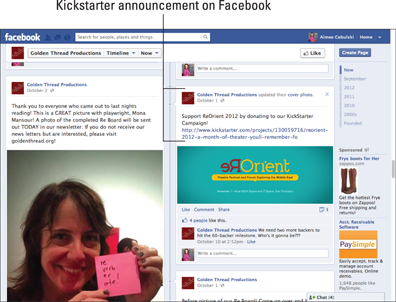
Figure 6-2: Sample Facebook post introducing a Kickstarter campaign.

Figure 6-3: A second example of how to announce your Kickstarter project.
After launching the campaign via your Facebook page, it’s important to do regular updates that relate to both your requests for support and your generic project updates. One option is to post photos individually from your Kickstarter campaign with a link back to your Kickstarter page. Take a photo you might have used in your long description (embedded using the media tool on your page), post the photo on your Facebook page, and write a short description about what that photo represents. Is it an example of your project in action or something you hope to accomplish? A quick blurb with a link to the Kickstarter page is a way to keep your project top-of-mind for your Facebook network without having to ask directly every single time.
It’s important to remember that your Kickstarter campaign is only a small part of your overall Facebook community; you likely have many friends, colleagues and family members in your network. You talk with these people about countless things throughout the day, so make sure you don’t turn your Facebook wall into a never-ending sea of posts about your campaign; intersperse your campaign updates with your typical status updates about other topics.
Using a Facebook business page
Beyond having a personal Facebook profile, you also have the option of creating a business page that can be used to promote your project. Similar to a personal page, you, as the administrator, can post updates, photos, links, videos, and more.
This type of page is very different from your personal Facebook profile. Unlike a personal profile, people “like” your page instead of becoming your friend. This way, users elect to see all the information you post on your page in their News Feeds, but you cannot see their personal information.
You can begin the process of starting a Facebook page specifically for your project (if you haven't done so already), by clicking the www.facebook.com/pages/create.php link. From there, you can choose from a list of types of pages:
![]() Local Business
Local Business
![]() Company, Organization, or Institution
Company, Organization, or Institution
![]() Brand or Product
Brand or Product
![]() Artist, Band, or Public Figure
Artist, Band, or Public Figure
![]() Entertainment
Entertainment
![]() Cause or Community
Cause or Community
Based on the nature of your project, select the appropriate category and begin developing your page. You can review Facebook Marketing For Dummies, 3rd Edition, by John Haydon, Paul Dunay, and Richard Krueger for additional information on how to build, design, and market your page. A project-specific Facebook page is an excellent additional resource for promoting your Kickstarter campaign.
Kickstarter has done an excellent job of integrating well with Facebook, realizing that this social media site is a very powerful tool for encouraging crowdfunding. Throughout the Kickstarter site, you can find ways to link your campaign with Facebook:
![]() On your main campaign home page, a button on the far right provides a link to your personal Facebook profile.
On your main campaign home page, a button on the far right provides a link to your personal Facebook profile.
![]() Kickstarter has its own business page at
Kickstarter has its own business page at www.facebook.com/Kickstarter where you can keep updated on the latest projects and modifications to the Kickstarter page. Click the Like button to add this page to your Facebook News Feed.
![]() If you end up creating a business page for your project, you can link to that page in your long description by adding the full website address in the copy and clicking the Link button in the editing box; then users can visit your Facebook business page and potentially “like” it.
If you end up creating a business page for your project, you can link to that page in your long description by adding the full website address in the copy and clicking the Link button in the editing box; then users can visit your Facebook business page and potentially “like” it.
Tweeting about your campaign
Although Twitter gives you only 140 characters, you should be able to compel your followers to at least click through to your Kickstarter campaign link to learn more about your project.
![]() Keep the content relevant to your campaign.
Keep the content relevant to your campaign.
![]() Use some or part of your Call to Action.
Use some or part of your Call to Action.
![]() Include a short URL that directs people to your Kickstarter campaign, as shown in Figures 6-4 and 6-5. A short URL is a shortened website address. Using a short URL enables you to include a link your tweet without using up your entire 140-character allotment.
Include a short URL that directs people to your Kickstarter campaign, as shown in Figures 6-4 and 6-5. A short URL is a shortened website address. Using a short URL enables you to include a link your tweet without using up your entire 140-character allotment.
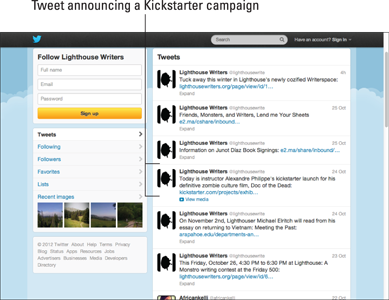
Figure 6-4: A sample Kickstarter announcement on Twitter.
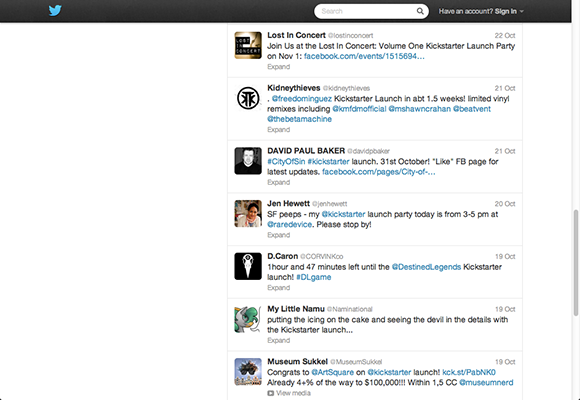
Figure 6-5: These search results for tweets about Kickstarter launches show different ways to announce a Kickstarter launch on Twitter.
Posting your campaign video on video-sharing sites
You’ve already created a strong project video, so here’s another way to use it to your advantage. Since the project video is designed to explain your project in a nutshell, use it to tell your story on other video-sharing sites.
Take the short blurb you already wrote as part of your campaign application and use it as a caption, video title, or description when you upload your video to YouTube and similar video-sharing sites. When you upload a video to a sharing site, you can usually include some information about the video and set a few options. Be sure to follow these tips:
![]() Make your video public. You want your video to turn up in search results, and you want viewers to have the ability to share the video with their friends.
Make your video public. You want your video to turn up in search results, and you want viewers to have the ability to share the video with their friends.
![]() Add search tags that are associated with the keywords in your description. Examples include film, photography, and so on. Make sure one of these is a keyword relating to the topic of your project.
Add search tags that are associated with the keywords in your description. Examples include film, photography, and so on. Make sure one of these is a keyword relating to the topic of your project.
![]() Include your name. You want to make sure to develop recognition as the project creator and enable people to find your project via your name if they know you or know of you.
Include your name. You want to make sure to develop recognition as the project creator and enable people to find your project via your name if they know you or know of you.
![]() Insert your Kickstarter campaign URL as a clickable link. For the link to work, you typically need to paste in the full web address with the
Insert your Kickstarter campaign URL as a clickable link. For the link to work, you typically need to paste in the full web address with the http:// in front.
Using your short blurb, keywords, and Kickstarter URL allows users to find you if they search for any of those topics.
Below is a list of some video-sharing sites to consider when posting your project video:
![]() YouTube.com
YouTube.com
![]() Vimeo.com
Vimeo.com
![]() GoogleVideo.com
GoogleVideo.com
![]() DailyMotion.com
DailyMotion.com
![]() Break.com (This one’s appropriate if your video is humorous.)
Break.com (This one’s appropriate if your video is humorous.)
![]() FunnyOrDie.com (Again, use this one if your video is humorous.)
FunnyOrDie.com (Again, use this one if your video is humorous.)
Each of the preceding sites has its own requirements for file size, format, upload protocols, and guidelines. Take some time to browse the videos posted on each of these and review the steps required for uploading your Kickstarter campaign video.
Tracking Your Backers
One of Kickstarter’s best features is the ability to quickly review how many backers you have, how much money they’ve pledged, and what reward each has selected. As your project continues, be sure to log in to your Kickstarter account every day and view your current Backer Report and status.
After you launch your project, you can follow these steps to look at your Backer Report at any time:
1. Go to the main Kickstarter web page and click the Me icon at the top — it should also have your profile picture. Or if you’re not logged in, then log in first.
2. Click your launched project name.
Your project page appears, similar to the one shown in Figure 6-6. Here you see how many backers you have, how much money you’ve raised, and how much time is left to reach your fundraising goal.

Figure 6-6: A Kickstarter project page looks like this after the project is launched.
At the top of the screen, you see several options — including Edit Project, Dashboard, Backer Report, and Post Update.
3. Click Backer Report to view your project’s backers, as shown in Figure 6-7.
At this screen you see a list of the number of backers in each reward category per the guidelines you set up on your project.
4. To see actual individual backers, click the View Report arrow to the right of each backer level.
Figure 6-8 shows a sample Backer Report at the $25 level for a project; notice the individual backers listed, date, and status for each one.
In February 2013, Kickstarter launched an iPhone App available through the App Store. If you have an iPhone, this is a great tool for tracking your backers while you’re on the go, as I explain in Chapter 7. If you have a different kind of smartphone, you can probably find a similar app for your mobile operating system. As this book went to press, the only Kickstarter-sponsored app is the iPhone app.

Figure 6-7: The main Backer Report page.

Figure 6-8: The Backer Report for a specific reward level.
Contacting Your Backers through Kickstarter
When you have a Kickstarter campaign, you can use a few different tools on the website to contact your backers. Your options include
![]() Messaging individual backers.
Messaging individual backers.
![]() Messaging all backers who chose a certain reward.
Messaging all backers who chose a certain reward.
![]() Posting an update to all your backers.
Posting an update to all your backers.
![]() Posting an update to backers that’s also visible to anyone who visits your campaign page.
Posting an update to backers that’s also visible to anyone who visits your campaign page.
In the following sections, I show you where to find the messaging tools for these options and explain how the tools work.
Sending a message
If you follow the steps in the preceding section to access the Backer Report page for a reward level, you also find two ways to contact your backers (refer to Figure 6-8):
![]() Message an individual backer: To the right of each backer’s name, you see a mail icon called Send Message. This allows you to send individual notes to backers on a one-on-one basis.
Message an individual backer: To the right of each backer’s name, you see a mail icon called Send Message. This allows you to send individual notes to backers on a one-on-one basis.
![]() Message backers in a reward tier: At the top of the report for a reward level is a Message All link. Click this link to message all backers who share a particular reward tier. While your campaign is active, this tool can be especially helpful if you want to offer perks to backers in a certain tier if they pledge a little more to your campaign. (Chapter 3 explains the concept of adding perks to a reward.)
Message backers in a reward tier: At the top of the report for a reward level is a Message All link. Click this link to message all backers who share a particular reward tier. While your campaign is active, this tool can be especially helpful if you want to offer perks to backers in a certain tier if they pledge a little more to your campaign. (Chapter 3 explains the concept of adding perks to a reward.)
In addition to messages, the Backer Report page gives you a few other tools to communicate with backers, but those aren’t available when you’re still raising funds. While your campaign is active, you see grayed-out buttons for things like Generate Your Report or Create a Survey, as shown in Figure 6-9. Don’t worry about those items now. These are tools Kickstarter has embedded into the website to allow you to communicate with backers to gather (say) e-mail and mailing addresses for delivery of finished products once your project is complete. Chapter 8 discusses completing your project and communicating with backers in greater depth.

Figure 6-9: Non-active buttons in Backer Report.
Posting updates
Kickstarter has an excellent built-in function that allows you to communicate in bulk to everyone who has already backed your project. You can even use this tool to post generic updates to your project, viewable to everyone, not just to backers. When you post an update, your message and any media that you add appears at the top of your campaign’s main page, just above where your video appears. There, people can click Updates and see every public update you’ve posted to date.
![]() Count down the number of days left. (See “Promoting Your Deadline” later in this chapter for more about this topic.)
Count down the number of days left. (See “Promoting Your Deadline” later in this chapter for more about this topic.)
![]() Update backers on milestones reached.
Update backers on milestones reached.
![]() Answer questions from backers.
Answer questions from backers.
![]() Share photos, videos, or audio relating to your project in action.
Share photos, videos, or audio relating to your project in action.
To post an update, follow these steps:
1. On the top of your project page, click the Post Update tab.
2. In the Title area, add a title for your update.
The title should be short and action-driven, leading with terms that highlight something new or different is happening — such as “Only 3 days left to back the project,” or “We’ve just completed the proofing on our book.” These titles should show action, just like a newspaper heading.
3. In the Body area, enter the text you’d like to appear in your update; use the formatting tools to add bold, italics, links, lists, and so on.
The text should also be fairly concise and get quickly to the point about what the update is for. People can read your campaign page for an overview of your project. The update should tell them something that’s not already on your page.
4. At the bottom of your Project Update screen, click any of the three Media Upload icons to upload video, audio, or photo files from your computer.
5. At the bottom of the Project Update screen, below the Media Upload icons, select who can see your update: Backers Only or Anyone.
Make your update public for all to see or just for your backers. Figure 6-10 shows where you select whether an update is public or private.
If your update has sensitive or financial information you only want your committed backers to see, select Backers Only. If you’re publishing a more general update and want it viewable by anyone who comes to your Kickstarter page, select Anyone.
6. Proofread the text of your message to make sure the information is accurate and that you haven’t made any spelling or grammar mistakes.
 You can’t go back and change an update after you post it, so take your time beforehand, making sure the content of your update is correct.
You can’t go back and change an update after you post it, so take your time beforehand, making sure the content of your update is correct.
7. Click the blue Preview Update button at the bottom of the page to see what your post will look like; check it once again for errors.
8. When you’ve reviewed the Preview, click either Publish or Edit from the two buttons at the top of the screen on the right.
• If you need to make changes, click Edit and repeat the editing process.
• If you’re happy with the update, click Publish to make the update go live on your page.
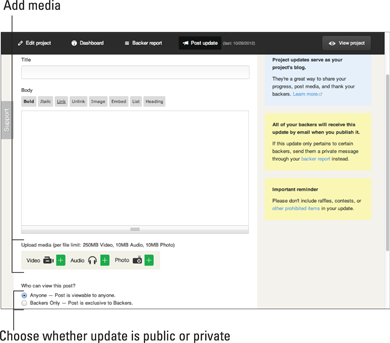
Figure 6-10: Choosing public or private viewing options for your updates.
Promoting Your Deadline
All Kickstarter campaigns have a definite end date; if you don’t hit your fundraising goal, you don’t get any of the money pledged by your backers. Accordingly, it’s important to alert both your backers and potential backers about the number of days left for two main reasons:
![]() Your existing backers may have other friends who would be interested in supporting your project.
Your existing backers may have other friends who would be interested in supporting your project.
![]() Potential backers who received your initial campaign launch communication may have forgotten or may not realize the number of days left in your campaign.
Potential backers who received your initial campaign launch communication may have forgotten or may not realize the number of days left in your campaign.
To promote your deadline to your existing backers, you can use project updates, as I explain in the preceding section. Figure 6-11 shows a project update I posted for my Kickstarter campaign just two days before it ended. Note that the title highlights the number of days left and amount of money I still needed to raise in order to meet my goal. In the body of my message, I outlined three specific ways backers could help me reach my goal:
![]() Share my project with people they know.
Share my project with people they know.
![]() Increase their pledge and reward.
Increase their pledge and reward.
![]() Preorder additional copies of my book.
Preorder additional copies of my book.
To promote your deadline to potential backers, you can use all the same tools I cover for announcing your campaign. (See the earlier section, “Contacting Potential Backers,” for details.) Your goal is to encourage backers to come on board before your campaign ends.
Figure 6-12 shows a revised version of a Facebook post highlighting the number of days left in a Kickstarter campaign for the game, Spaghetti & Meatballs. The campaign owner has used his personal Facebook page to let people know his campaign has 17 days left. Note how he also outlines the level of support he needs in order to meet his goal. What’s great about this post is it shows how very attainable the goal is if many people participate on a small level, highlighting the power of crowdfunding.
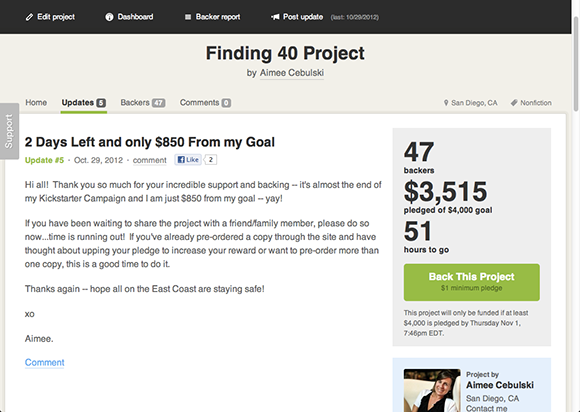
Figure 6-11: I posted this project update to promote the deadline for my Kickstarter campaign.

Figure 6-12: This Facebook post highlights the number of days left for the Spaghetti & Meatballs Kickstarter campaign.
You may also have used personal e-mails to introduce your Kickstarter project to family, friends, co-workers, and other contacts. When you have three weeks, two weeks, and one week left, it’s a good idea to send a reminder e-mail with the countdown highly emphasized in both the subject line of the message — and visible high up in the content, as shown in Figure 6-13.
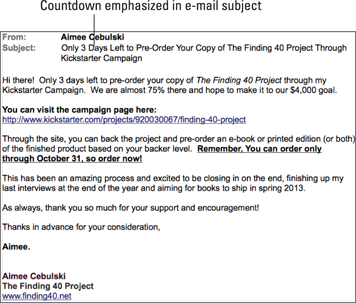
Figure 6-13: Updated e-mail showing urgency in subject line and content.
Each day, you can log in to your Kickstarter project and see the number of days left to go, your total backers, and the percentage of your total goal received.
Paying to Promote Your Campaign
You have an overall project budget (as developed in Chapter 3). Don’t forget to track costs you might spend promoting your Kickstarter campaign against that budget.
For example, you might consider any of the following paid services to promote your campaign and deadline:
![]() Buying a Facebook advertisement
Buying a Facebook advertisement
![]() Electing to promote your post on Facebook
Electing to promote your post on Facebook
![]() Buying an Internet advertisement on an industry website
Buying an Internet advertisement on an industry website
![]() Taking out an advertisement in a local newspaper to promote your deadline
Taking out an advertisement in a local newspaper to promote your deadline
![]() Hosting events or dinners to educate potential backers about your project
Hosting events or dinners to educate potential backers about your project
All of these are legitimate ways to promote your deadline — but remember: They all cost money. Be sure to enter these costs into your project spreadsheet (outlined in Chapter 3) so you can track what was spent on the overall project.
Buying advertising on Facebook
Facebook ads are a way to reach a large number of Facebook users around the world without needing to draw them to your business page or becoming your friend. Facebook ads appear on the right side of a user’s Facebook News Feed every time they log in. There are two main types of advertisements:
![]() Display ads include a photo and text much like an ad in a newspaper or magazine.
Display ads include a photo and text much like an ad in a newspaper or magazine.
![]() Sponsored story ads appear onscreen like posts on a wall.
Sponsored story ads appear onscreen like posts on a wall.
One of the best things about potentially advertising your Kickstarter campaign on Facebook is that you can advertise by location, interests, or connections — and you can target just the people who’ve already “liked” your page. To support a Kickstarter campaign, you can pick only people in your geographic area if you’re promoting a regional event or performance, or everyone interested in a certain topic (such as books, magazines, or product design). Figure 6-14 shows how the targeting works.
The cost to advertise on Facebook varies greatly based on the demand for access to a certain audience, meaning the more a group or geographic area is desired, the higher the advertising rate. Facebook uses a bidding system, where you can set a number that you’re willing to pay per click (meaning you pay only when someone actually clicks your ad) or per impression (payment based on a total of how many people viewed your advertisement). Facebook uses a closed bidding system, meaning you do not get to see what others pay for their ads.
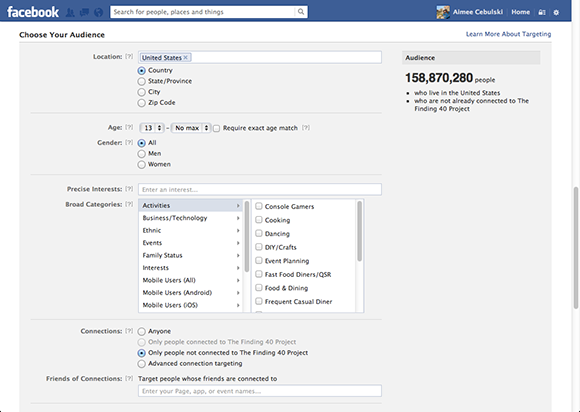
Figure 6-14: Facebook’s advertising targeting options.
There is no hard-and-fast way to determine how much a Facebook ad will cost; it could be as low as $100 and as high as $1,000 and up. If you decide to pay for a Facebook advertisement, be sure to put that expense into your master budget as a cost — and look at the number of backers you would have to have (and at what level) to make the benefit to the project worth the cost. When you set up your Facebook advertisement, you determine the budget per day or per lifetime of the ad — meaning that if you reach the target number of clicks or impressions by the end of a certain day, the ad will not run again until the next day, ensuring that you don’t go over the budget you’ve set in your account.
You can learn more about Facebook advertising at www.facebook.com/advertising. This information is correct as this book went to press, but Facebook is constantly changing these tools. For example, just a few months earlier, the promoted post option was not available, and now it is a popular advertising tool on Facebook. Check Facebook's advertising web page for the most current information.
Purchasing other Internet or newspaper ads
Another opportunity for promoting your Kickstarter campaign is a website banner or newspaper ad. This is usually a larger expense than Facebook ads; you may or may not have control over how many people view your actual advertisement, but it could be a good source of potential backers.
It’s likely that you already know the websites and newspapers/magazines that cover your industry or neighborhood. In order to get a sense for what an advertisement in these outlets might cost, follow these steps:
1. If you’re on a website, look to see if it has an Advertise or Contact Us tab or button.
2. If a Media Kit is available, download it.
This kit will have the organization’s current reach, audience figures, and advertising rates (as shown in Figure 6-15).
3. If you don’t see the Media Kit easily available, try the Search function on the website.
4. If you still don’t see the Media Kit, use a Contact button or phone number to request a current Media Kit.
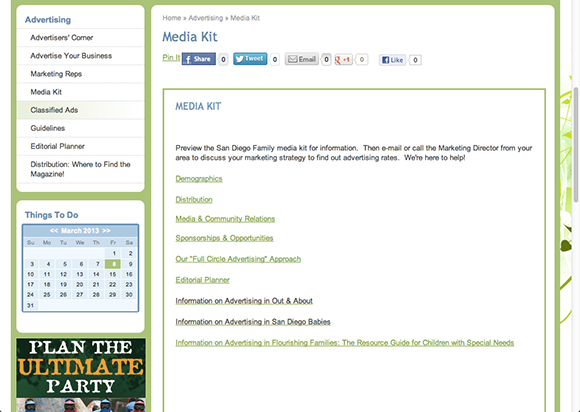
Figure 6-15: Sample of Media Kit contents.
5. Review the content provided in the Media Kit.
You find options for various sizes and types of advertisements, as well as the minimum run commitments.
6. Based on the run dates and other specifics of your campaign, request a quote from the ad representative — and then negotiate!
 Ad rates are always negotiable; it never hurts to ask for a discount.
Ad rates are always negotiable; it never hurts to ask for a discount.
Using promotional events and ideas to drive backers to your campaign
Promotional events are another idea for spreading the word on your Kickstarter campaign. A hosted happy hour is one familiar way to reach out to a group, potentially targeting people you wouldn’t reach otherwise. Here are a few ideas for promotional events:
![]() Artists’ nights: Look at the restaurants and bars around your home. Do you ever see them hosting artists or displays? Do they have a regular night of the month where local filmmakers come in and show their movies as entertainment for the audience?
Artists’ nights: Look at the restaurants and bars around your home. Do you ever see them hosting artists or displays? Do they have a regular night of the month where local filmmakers come in and show their movies as entertainment for the audience?
Many local establishments are looking for ways to enhance guests’ entertainment without spending additional money. You, as a creative person, might have something to share or add to an establishment’s ambiance.
Figure 6-16 shows a web page for a restaurant called Basic Pizza which hosts local artists on Tuesday evenings. If you’re using Kickstarter to create a gallery showing or photo exhibition, this might be a great opportunity to get your work in front of a new audience.
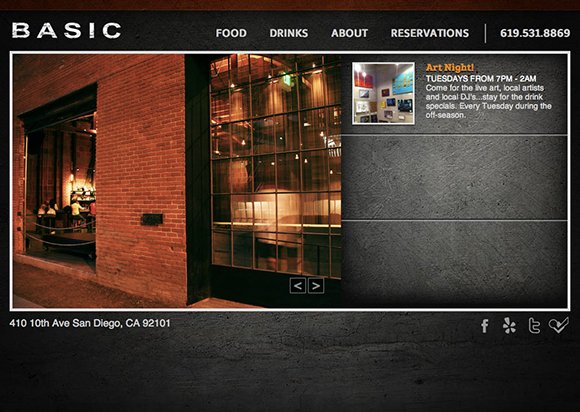
Figure 6-16: Artists’ night at Basic Pizza in San Diego.
Spend some time examining opportunities right nearby to participate in an evening like this; you may also want to speak to a manager about potentially hosting your own evening — where you are the only artist present — in exchange for a small fee. Again, such a fee is a hard cost, so be sure to add it to your project budget.
![]() Raffle events: This can be an online event tied to your Kickstarter campaign, potentially run via your Facebook or Twitter posts. Post an announcement that everyone who backs your project within the next 24 or 48 hours will be entered into a raffle that will bump them up to the next backer level without an increase in pledge (for example, if you pledge $25 in the designated timeframe, you will get the rewards of a $50 backer for $25).
Raffle events: This can be an online event tied to your Kickstarter campaign, potentially run via your Facebook or Twitter posts. Post an announcement that everyone who backs your project within the next 24 or 48 hours will be entered into a raffle that will bump them up to the next backer level without an increase in pledge (for example, if you pledge $25 in the designated timeframe, you will get the rewards of a $50 backer for $25).
![]() Pledge upgrade promotions: This is an idea for getting your existing backers to up their pledge level. Send a message to everyone that has pledged to a certain level and tell them for a designated time only (24–48 hours), if they increase their pledge to the next level, they will get a premium reward not currently available on the site.
Pledge upgrade promotions: This is an idea for getting your existing backers to up their pledge level. Send a message to everyone that has pledged to a certain level and tell them for a designated time only (24–48 hours), if they increase their pledge to the next level, they will get a premium reward not currently available on the site.
iPhone Elevation Dock: Getting the Word Out
Apple fans are often obsessive about getting the latest and best technology — and are picky about what they choose to use with their Apple products. The team at ElevationLab knew this and specifically marketed the Elevation Dock (which I introduce in Chapter 2) as a product worthy of association with the consumer’s iPhone.
ElevationLab even crafted its website and images to mimic the look and feel of the main Apple website, as shown in Figure 6-17.
So the Elevation Dock was “The Best Dock for your iPhone,” according to its campaign creators. How would they let other people know?
A first step was to promote the project within the company’s existing client base and friends and families.
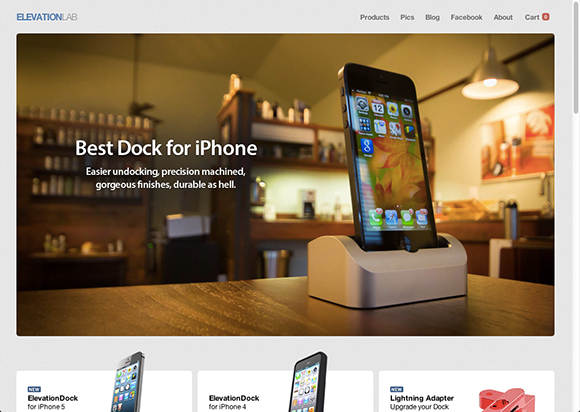
Figure 6-17: ElevationLab home page.
To become truly successful and a runaway hit, they needed to reach the Apple fan base — the enthusiastic mass audience that might not even be aware that Kickstarter existed, let alone a product that filled a very real niche.
ElevationLab began blogging, tweeting, and posting on Facebook about the dock and the Kickstarter campaign; bloggers and writers who covered new technology — and Apple in particular — were targeted and sent links to the Kickstarter campaign.
Websites such as TheNextWeb and Gizmodo first picked up and ran with the story that the Elevation Dock was truly better than the Apple-produced product. Once those first hits began to come in, interest in the product began to snowball as stories got tweeted and shared around the tech blogosphere.
Why did the Elevation Dock campaign work so well?
![]() The team included designers trying to create a product that really met a market niche, based on their own personal experience.
The team included designers trying to create a product that really met a market niche, based on their own personal experience.
![]() The team knew its audience — Apple users — would pay a premium for a better-designed product.
The team knew its audience — Apple users — would pay a premium for a better-designed product.
![]() The campaign was focused and targeted on a single product with a strong user base.
The campaign was focused and targeted on a single product with a strong user base.
![]() Using the team’s own community (tech bloggers) helped to create a buzz.
Using the team’s own community (tech bloggers) helped to create a buzz.
Finding 40: Learning from My Own Kickstarter Campaign(s)
One of the best ways to become an expert at something is to try, fail, figure out what you did wrong, and try again. Here’s where I share my experiences as a Kickstarter user with both a successful and an unsuccessful campaign under my belt. I share my lessons learned about creating compelling content, specifying what the funds are for, and promoting my campaign. When I applied these lessons to my second campaign, I was not only successful, but also doubled my fundraising target.
Looking at my project
I first became aware of Kickstarter in early 2012 after a friend had used it to fund an art showing. After poking around a bit on the site, I determined this would be a great way to get funding for my book, The Finding 40 Project (www.finding40.net).
Since May 2011, I’d been photographing and interviewing women facing the “big 4-0,” around the country and internationally. My goal was to create a book of their stories and photos, highlighting what age 40 means, and showing how different it could look.
I thought Kickstarter would be a great way to finish the funding of the project and move me toward a book deal. I needed capital to travel to locations to photograph women — and also to defray the production costs for a proposal.
I began filling out my Kickstarter campaign for The Finding 40 Project with details about me, my vision and ambition, and the concept for the book — without really thinking too specifically about my end goal.
Filling the content
Figure 6-18 shows the initial home page for my first campaign.
Here you can see that I’m trying to describe the project and my vision, and to lay out an idea to have the Kickstarter campaign fund the next leg of the project. But I made three key mistakes here:
![]() The initial content was too vague and did not grab the reader’s attention.
The initial content was too vague and did not grab the reader’s attention.
![]() The description was too short.
The description was too short.
![]() I wasn’t clear about what I was going to use the money for.
I wasn’t clear about what I was going to use the money for.
At the time, I thought everyone would be interested in funding my book and following the blog — I didn’t even think at all about why people should be interested.
Additionally, I failed to use the Project Description section to add any FAQs or other notes.
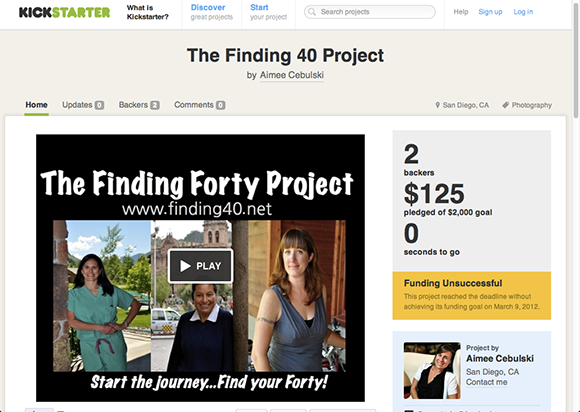
Figure 6-18: The campaign content for my first Kickstarter campaign.
Another key mistake made in my first Kickstarter campaign: I didn’t use enough media. I did create and upload a project campaign video, but I didn’t add any other supporting photos of the project in action, or women photographed to date. The content page looked very bland, as shown in Figure 6-19.
In Chapter 2, I walk you through tips (and even a few exercises) to help you create good supporting content for your project.
Failing to use my own networks
You can’t just expect to put a project up on Kickstarter and expect people to find and back it out of the blue.
I made a classic mistake when I launched my first campaign: I didn’t tell anyone about it! Once the campaign went live, I did a single Facebook post and sent one e-mail out to friends and family. As you learn in this chapter, promoting your campaign takes much more than that!

Figure 6-19: Failing to add enough media creates a bland page.
I also failed to use my larger professional and community networks. I did not reach out to my fellow photographer friends, nor do any PR or blogging.
Not strategizing properly
Here’s where the importance of two must-dos crops up: creating a compelling call to action and showing firm reasoning behind your campaign. Your call to action is essential to campaign success. In my first Kickstarter campaign, the call to action was far too vague; backers didn’t know what they were really funding.
Even though my fundraising goal was smaller in my first campaign versus my second ($2,000 versus $4,000), I fell far short because backers didn’t feel that they understood what the campaign was about.
Instead of using firm words like “printing, production, or design,” my first campaign talked about “funding the next leg of the project” and “hard costs,” without indicating what those costs were to be.
Second campaign: Success!
In October 2012, I launched my second Kickstarter campaign for The Finding 40 Project. This time I knew more about what I needed funding for — and how to communicate with backers.
Figure 6-20 shows the revised campaign page, with a much more detailed description and call to action.
This time around, I beat my funding goal and secured $4,281 for production costs. Why did I succeed this time?
![]() The campaign description was much more specific.
The campaign description was much more specific.
![]() Backers got a very clear sense of what they were supporting.
Backers got a very clear sense of what they were supporting.
![]() I showed more of the finished product/photos.
I showed more of the finished product/photos.
![]() I used media more effectively.
I used media more effectively.
![]() Backer rewards were tied to finished production elements with firm delivery dates.
Backer rewards were tied to finished production elements with firm delivery dates.
![]() I specifically addressed “Why Kickstarter?” for backers — explaining how traditional publishing had changed.
I specifically addressed “Why Kickstarter?” for backers — explaining how traditional publishing had changed.
One of the most important lessons that I learned in the entire process was to think about what you’re trying to accomplish before you even launch your campaign. If you launch before you have a clear sense of what you need (as I did the first time around), you’re likely to fail. If you clarify your goals and do your homework beforehand to figure out what it takes to get there, you’ve got a shot.
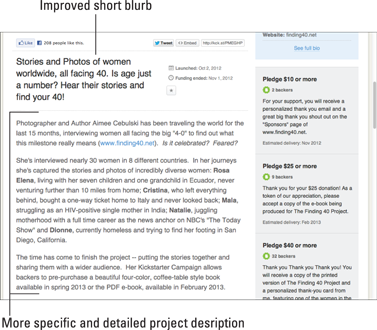
Figure 6-20: My revised Kickstarter campaign page in October 2012.
